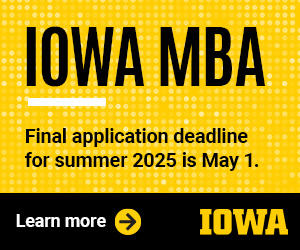Improving the process

It used to take Iowa Department of Natural Resources staff more than two months, on average, to review companies’ air quality permit applications. Now, using Kaizen, a business-improvement technique originally developed by Japanese manufacturing companies, the department has reduced the average review time to just 15 days.
As a result of this success, other state agencies are now considering using a similar approach to streamline their operations.
The changes at the DNR began last summer, when the Air Quality Bureau went through an intensive week long review of its processes. The review was funded by the Iowa Coalition for Innovation and Growth with support from the Iowa Business Council.
In the past six months, the department has whittled down a backlog of 624 air quality permit applications to 67. It has also streamlined the number of review steps for a permit from 23 to seven.
“It was real exciting,” said Alexa Heffernan, executive director of the Iowa Business Council. “People (on the DNR staff) were enthused. Suddenly people who had been bogged down were seeing progress.”
For companies such as Pella Corp., the improvement means they’re receiving their air quality permits sooner, so that they can launch new products or processes more quickly.
“It actually got started when the Iowa Business Council started the Iowa Council for Innovation and Growth,” said Karin Peterson, Pella’s vice president of human resources. As part of that effort, focus groups involving both large and small businesses were asked what the most difficult barriers were to starting or conducting business in the state.
“Environmental permitting and regulatory processes came up as the biggest concerns,” Peterson said. “And we kept hearing about air quality permitting (as a problem). We thought, rather than complaining about it, why don’t we do something? We do process improvement in business. Why can’t we do it with government?”
TBM Consulting Group of Durham, N.C., was brought in last summer to conduct a Kaizen review of the DNR’s processes. As a result of the review, the Air Quality Bureau has taken a number of steps to streamline its operations, from installing a toll-free customer hotline to providing companies immediate feedback when a permit application is received.
“I’m told this is the first time this kind of procedure has been applied to a regulatory process,” said DNR Director Jeffrey Vonk. “It’s basically been a business-manufacturing process, and we’ve applied it to government with a fair amount of success.”
The improved process is also beginning to change the expectations of the companies applying for permits, said Catharine Fitzsimmons, chief of the Air Quality Bureau. Because the bureau is turning around applications faster, most companies are responding with needed information within a day or two, she said.
The bureau issues about 2,000 air quality permits a year, primarily to manufacturing operations. About 16,000 facilities across the state are required to obtain permits. Fitzsimmons said new rules exempt some smaller operations, which should help reduce the number of new permits that will need to be issued.
Vonk and Peterson both said it’s likely that the DNR’s water quality permitting process will be evaluated next, with another business process improvement review tentatively planned for March.
As for which other agencies that will be evaluated, that hasn’t been determined yet, said Tina Hoffman, a spokeswoman for the Iowa Department of Economic Development. Teams made up of several agencies’ directors will be talking with business leaders about what processes should be at the top of the list, she said.
“There has been discussion about applying this to all kinds of processes,” Hoffman said. “There have been discussions about how we could think outside the box.”
A CULTURAL CHANGE
Improving quality and eliminating waste have been part of the culture at Pella Corp. for years, said Karin Peterson, the company’s vice president of human resources. The company uses process improvement management techniques “all over the place,” she said.
“We started on the factory floor, to drive waste and time out of our processes,” Peterson said. “Then we brought it into our offices. I’ve used it in the hiring processes of our offices. We had an ungodly number of forms; we were able to cut the number of forms at least in half.”
Pella’s strong profit-sharing plan is one of the ways it rewards its employees for increasing efficiency, according to Peterson.
“If you’re more efficient, that drives more volume and that affects the bottom line as well,” she said. “We’ll celebrate our achievements; [employees] will get a shirt at the end of the process, or be recognized for being part of an improvement team.”
Instituting a quality management program at a company is as much a cultural change as it is a process change, Peterson said.
“It’s always thinking about, how can I eliminate waste? We say here, ‘what is the customer willing to pay for?'”






